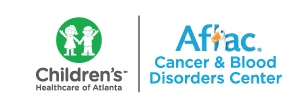Lucille Lang Day, Ph.D., Eileen Murray, Marsha J. Treadwell, Ph.D., Bertram H. Lubin, M.D.
Journal of the National Medical Association
Vol 107, No 1, February 2015
A 5-lesson, 5th-grade instructional unit, “Genetics and Sickle Cell Disease,” was developed and tested as part of a 40-lesson curriculum entitled SEEK (Science Exploration, Excitement, and Knowledge): A Curriculum In Health and Biomedical Science for Diverse 4th and 5th Grade Students. The genetics lessons include hands-on activities (e.g., DNA extraction from cheek cells), a simulated plant genetics experiment, and a classroom visit by a person with sickle cell disease, as well as by a health care practitioner who works with sickle cell patients or a scientist specializing In genetics. The unit was tested with 82 5th-grade students at public elementary schools in Oakland, CA; 96%were racial and ethnic minorities. The comparison group consisted of 84 5th-grade Oakland students racially/ ethnically, academically, and socio-economically matched to those in the experimental group. Both groups completed a 20-question, multiple-choice pre/posttest covering science concepts, scientific process, lifestyle choices, and careers. The experimental group showed significant improvement on 13of20 questions (P<.05, t-tests) and on the test as a whole, whereas the comparison group did not show significant improvement eitheron any of the questions or on the test as a whole. The experimental group improved on 10 concept questions, 2 scientific process questions, and 1 lifestyle question. Teachers rated the educational value of the unit as 9.5 on a scale from 1 (low) to 10 (high). These results showthat genetics and sickle cell disease can be taught successfully in 5th grade, although they are not typically covered at this level.
To read the full article in PDF format, click here.


